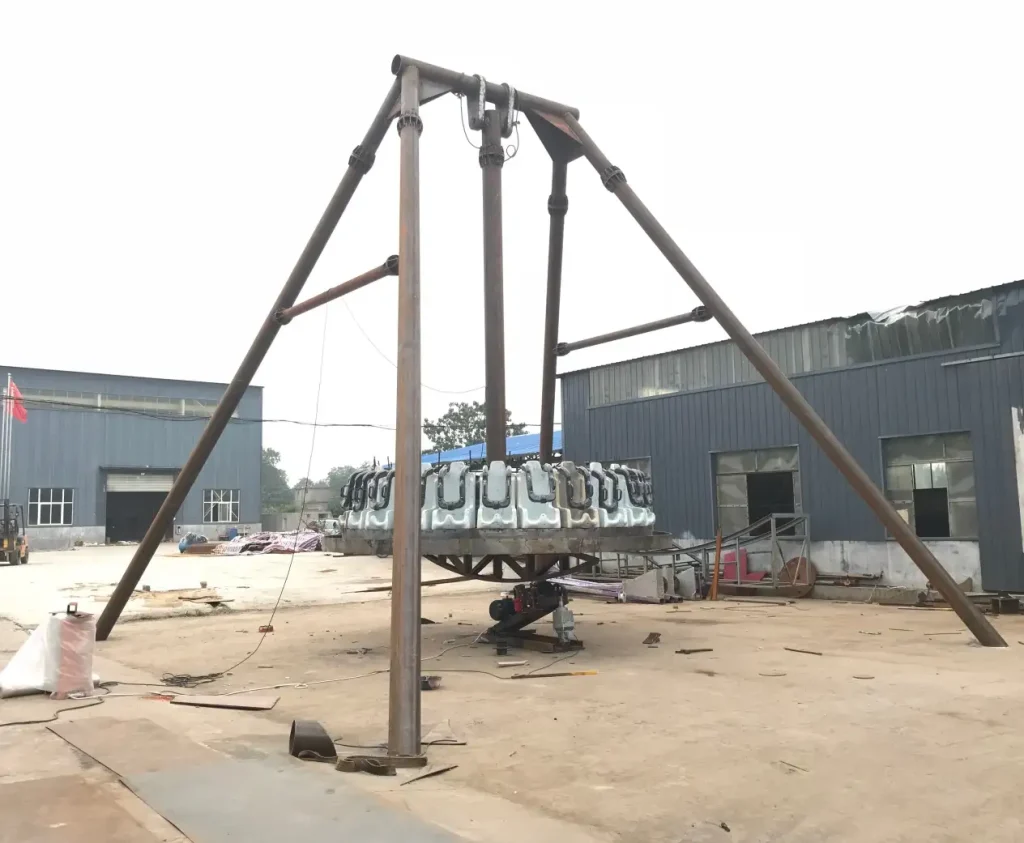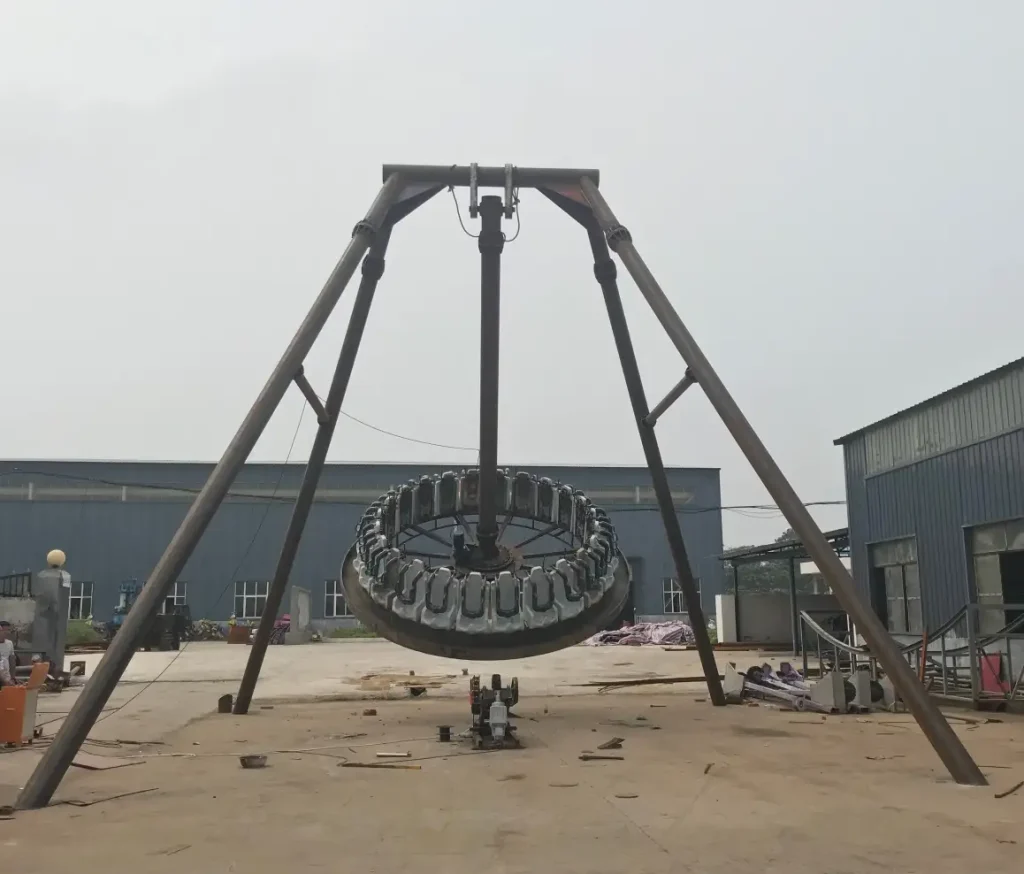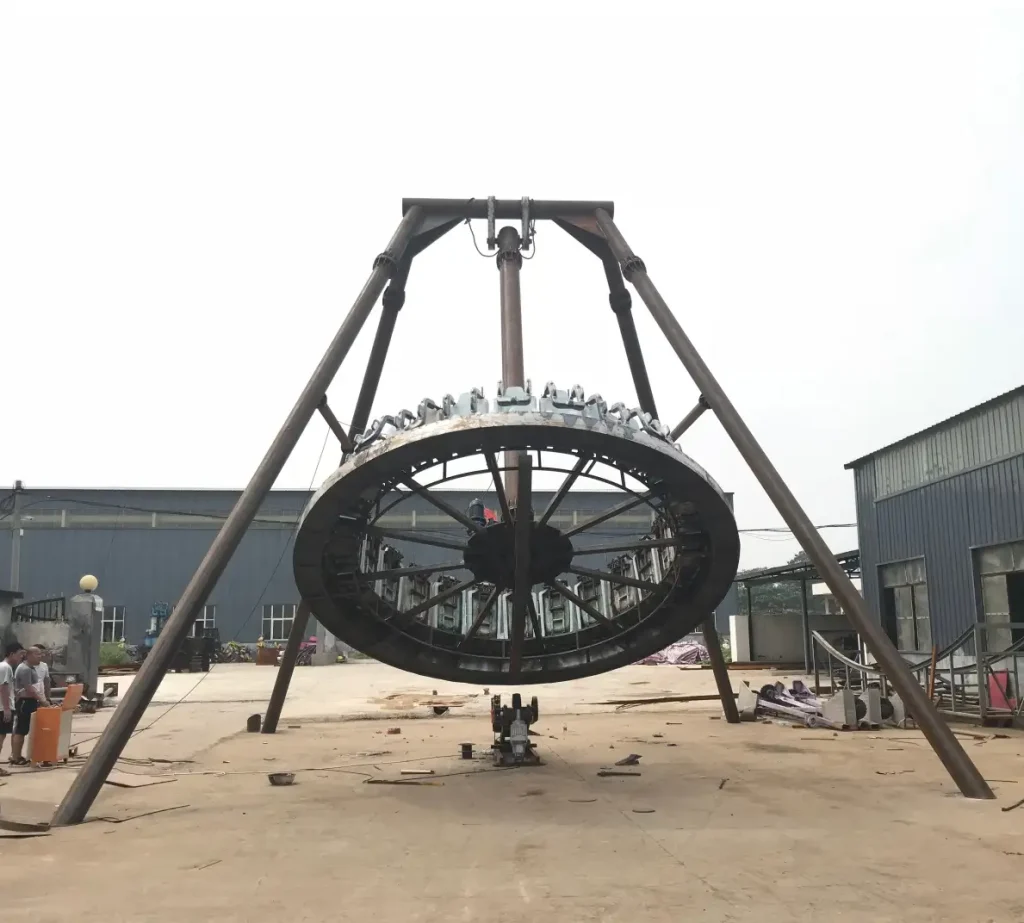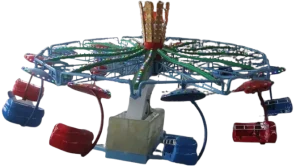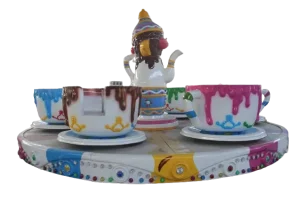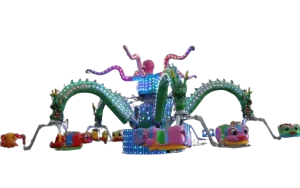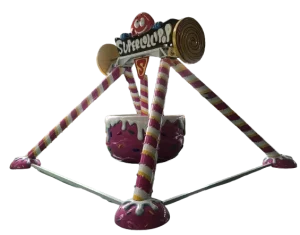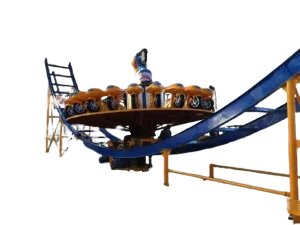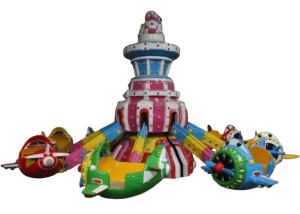what Big Pendulum
Big Pendulum captivate thrill-seekers with its dramatic swinging action. These attractions provide a special fusion of height, speed, and gravity that gives riders an exciting experience.
They are based on the basic mechanics of a swinging pendulum. The pendulum idea has demonstrated its continuing appeal in the entertainment business with both more modern designs and historical examples such as the Ali Baba and the Pirate Ship. These rides’ development shows a constant attempt to up the excitement level and satisfy the needs of thrill-seekers.
The “Big Pendulum” is a particularly well-liked and powerful attraction among the many varieties of pendulum rides. These massive constructions, which are sometimes called “Giant Pendulum” or “Frisbee” rides, are distinguished by their circular gondola that can hold a huge number of riders and its conspicuous swinging arm.
These rides are designed to soar to amazing heights and speeds, providing a high degree of excitement that appeals to a wide range of amusement park guests. In order to attract attention and communicate to potential customers the thrilling nature of the ride, the word itself, which emphasizes “Big” or “Giant,” reflects a purposeful marketing approach to stress the experience’s grandeur and intensity.
details of the Big Pendulum
our the Big Pendulum
There are several various designs in the Big Pendulum ride category, and each one provides a somewhat different experience. Certain types have a simple swinging action that gives them a traditional pendulum feel. A rotating gondola is a feature of other, more sophisticated models that increases the excitement factor by having passengers rotate in addition to swinging.
Some Big Pendulum rides may swing through a full 360-degree inversion for the most extreme thrills, giving passengers the impression that they are upside down at a considerable height. This increase in design complexity demonstrates a continuous effort to provide experiences that satisfy the desire for high thrills while becoming more varied and intense.
Fundamental mechanical concepts and the rules of physics guiding pendulum motion are essential to the Big Pendulum ride’s operation. An arm that supports the gondola, an axle that serves as the pivot point for the arm’s swing, and a gondola where passengers are seated are usually included in the fundamental construction. The centripetal force and gravity are the main factors that propel the pendulum’s movement. Rides use motors—typically DC motors or a set of wheels that drive the gondola—to start and keep the swinging action going.
To provide a bigger swing angle and more speed, some designs use an upper transmission system, which places the engine at the top of the ride. Counterweights are frequently positioned thoughtfully on the arm of models intended for inversion to enable full rotation. Passengers encounter a dynamic interplay of forces over the ride cycle, experiencing the strong pull of G-forces as they pass through the bottom and a sense of near-weightlessness as they reach the swing’s highest point.
Amusement park operators must take into account the ride’s power, responsiveness, and maintenance complexity, all of which are influenced by the propulsion mechanism selection—whether it be DC motors, wheels, or an upper transmission.
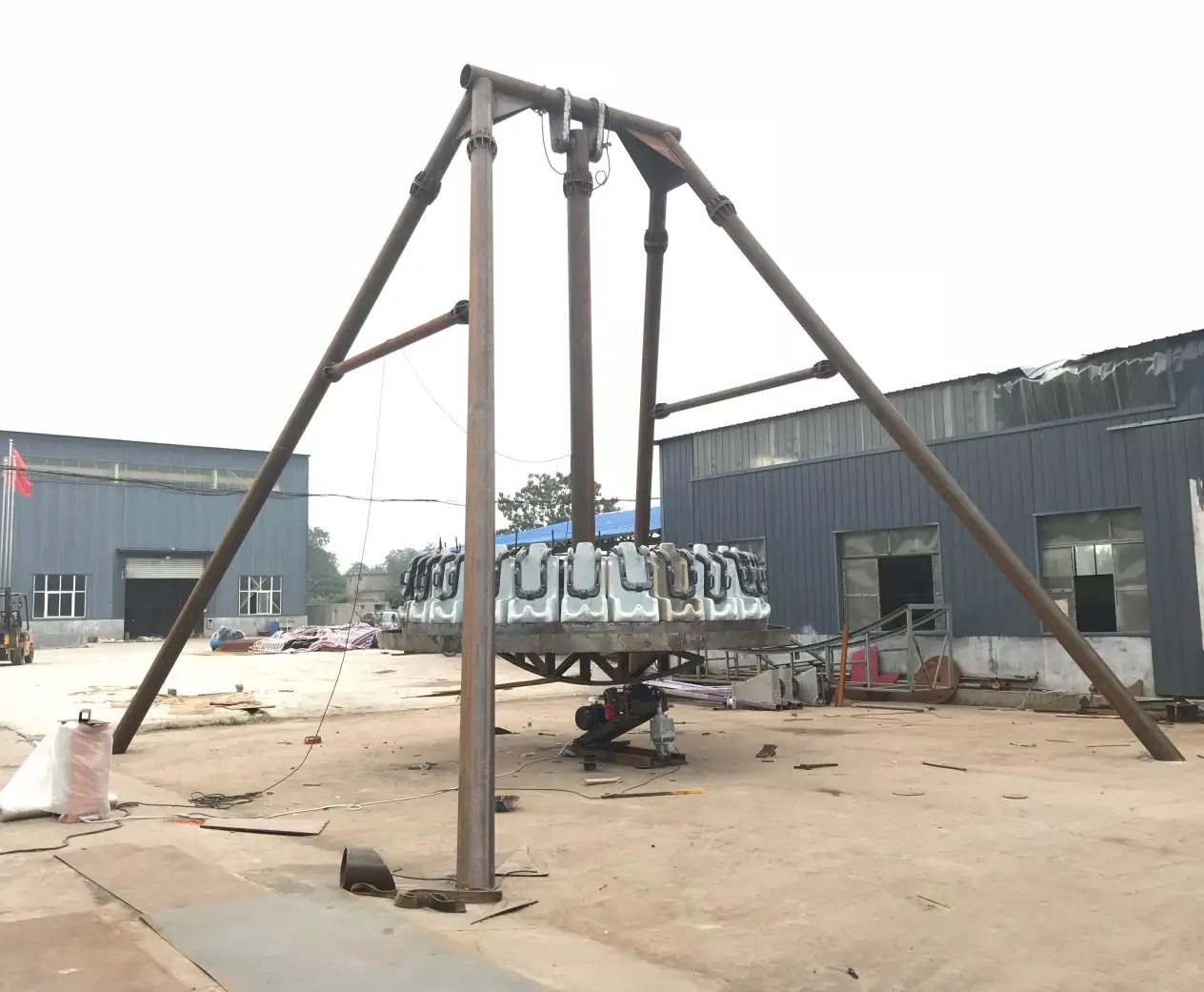
FAQ’s
Need to know before using
I. Ride Controls and Components:
A Big Pendulum is made up of a number of essential parts that combine to provide an exhilarating experience. The round platform where passengers sit is called the gondola. The chairs face either inside or outward, depending on the model.
The structural component that gives the ride its distinctive swinging motion is a long arm that is attached to the gondola. The pendulum’s fulcrum is a central axle around which this arm revolves. Motors supply the force needed to start and maintain the swinging action.
These motors can be found at the base or at the summit of the ride structure, among other places. Ensuring the safety of riders is crucial, and Big Pendulum has safety. These usually consist of safety belts and individual over-the-shoulder harnesses; some versions also include automated restraint systems.
It is important to remember that earlier versions, especially those that resembled UFOs, occasionally depended mostly on the contained cage construction of the gondolas and the centrifugal force produced by spinning to hold riders.
By adjusting the kind and degree of constraint to the particular intensity and movement characteristics of the ride, restraint systems have evolved to represent a dedication to constantly raising safety standards.
The main interface for controlling the ride’s functioning is the operator control panel. Essential controls like start and stop mechanisms and emergency stop buttons for an instant ride termination in an emergency are probably included in this panel. In order to avoid harmful operation, safety interlocks are also implemented. More advanced control panels could have buttons to operate individual restraints or to lock and unlock all passenger restraints at once.
Operators might get real-time information on the gondola’s location and the condition of each restraint via an HMI (Human-Machine Interface).The panel may also have an acknowledgement button to handle any system problems or alarms, a lift stop for maintenance, and advance buttons to move the ride progressively for loading and unloading. The effectiveness and safety of the ride’s operation depend heavily on a well-designed control panel that gives operators unambiguous and simple control over all essential features.
II. Procedures Prior to Operation:
A thorough daily inspection checklist must be followed by ride operators prior to starting daily operations. This entails visually evaluating every ride component, including examining the structural frame for wear or corrosion, assessing the integrity of each seating unit, and closely examining each safety restraint to ensure it is in good working order.
Because accumulated debris, oil, or grease can provide serious safety issues, it is also essential to keep the area surrounding the ride clean and litter-free. In accordance with the manufacturer’s instructions, operators must make sure that all bolts, screws, and other fasteners are tightened firmly. A final test run of the ride without any riders should be carried out to ensure that it operates properly before permitting any passengers to board.
Operators must conduct comprehensive safety system checks and verifications in addition to the mechanical and visual inspections. This entails testing all crucial control systems to make sure they react quickly and efficiently, including the emergency stop buttons and the main start and stop mechanisms.
To avoid unplanned disruptions during operation, the integrity of every power connection has to be checked. Additionally, it is necessary to verify that safety interlocks—which are intended to stop the ride from running in hazardous situations (such unfastened restraints)—are performing as intended.
Lastly, operators need to understand and follow the rules on weather and operational restrictions. The functioning of several Big Pendulum rides may be restricted in inclement weather, such as rain or strong winds. To protect the integrity of the ride and the safety of the passengers, operators must refer to and closely adhere to the manufacturer’s recommendations about safe operating parameters.
III. Protocols for Operations:
A methodical and secure approach must be taken when loading and unloading people. In order to ensure adequate load balance, operators should guide passengers to their assigned seats while making sure that the weight is spread uniformly throughout the gondola.
Visitors with special needs or mobility issues should receive extra consideration, and help should be provided as needed. Any passenger who might need assistance getting on or off the ride, regardless of age, shall be offered assistance by the operators. According to the park’s established protocol, operators must wait for express permission from the relevant staff before restarting operations following any temporary halt of the ride.
V. Fundamental Upkeep and Diagnostics:
When it comes to a Big Pendulum ride’s continuous maintenance, ride operators are essential. Keeping the ride vehicle and the surrounding operational area tidy and debris-free are examples of routine maintenance duties that operators usually complete.
Additionally, when the attraction is operating, operators should keep a close eye out for any odd noises or vibrations and report them right away to the maintenance department. Frequent basic maintenance enables the early detection of any mechanical problems and contributes to a clean and safe riding environment.

